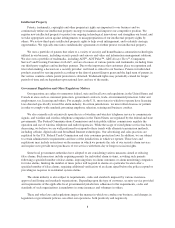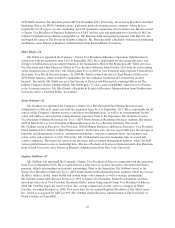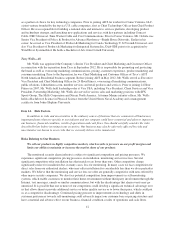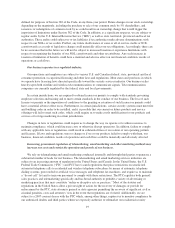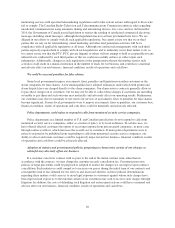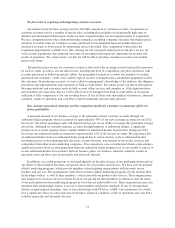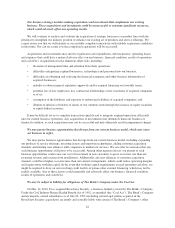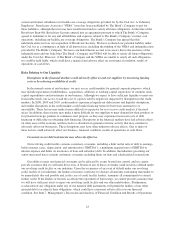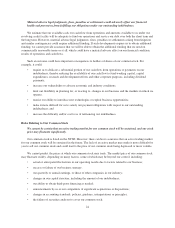ADT 2012 Annual Report Download - page 108
Download and view the complete annual report
Please find page 108 of the 2012 ADT annual report below. You can navigate through the pages in the report by either clicking on the pages listed below, or by using the keyword search tool below to find specific information within the annual report.We are exposed to greater risks of liability for employee acts or omissions or system failure, than may be
inherent in other businesses.
If a customer or third party believes that he or she has suffered harm to person or property due to an actual
or alleged act or omission of one of our employees or security system failure, he or she may pursue legal action
against us, and the cost of defending the legal action and of any judgment against us could be substantial. In
particular, because our products and services are intended to help protect lives and real and personal property, we
may have greater exposure to litigation risks than businesses that provide other consumer and small business
products and services. Substantially all of our customer contracts contain provisions limiting our liability;
however, in the event of litigation with respect to such matters, it is possible that these limitations may be
deemed not applicable or unenforceable and, regardless of the ultimate outcome, we may incur significant costs
of defense that could materially and adversely affect our business, financial condition, results of operations and
cash flows.
We rely on a significant number of our customers remaining with us as customers for long periods of
time.
We operate our business with the goal of retaining customers for long periods of time in order to recoup our
initial investment in new customers, achieving cash flow break-even in slightly less than three years.
Accordingly, our long-term profitability is dependent on long customer tenure. This requires that we minimize
our rate of customer disconnects, or attrition. Factors that can increase disconnects include customers who
relocate and do not reconnect, problems with our product or service quality, an economic slowdown, a downturn
in the housing market and the desirability and pricing of our and our competitors’ products and services. Our
customer attrition rates for fiscal years 2012, 2011 and 2010 were, respectively, 13.8%, 13.0% and 13.3%. If we
fail to keep our customers for a sufficiently long period of time, our business, financial condition, results of
operations and cash flows could be materially and adversely affected.
If we experience higher rates of customer attrition, we may be required to change the estimated useful
lives of assets related to our security monitoring customers, increasing our depreciation and amortization
expense or impairing such assets.
We amortize the costs of our acquired and dealer-generated contracts and related customer relationships
based on the estimated life of the customer relationships. We similarly depreciate the cost of our internally
generated residential and small business monitoring system assets. If attrition rates were to rise significantly, we
may be required to accelerate the amortization of expenses related to such contracts and the depreciation of our
subscriber system assets or to impair such assets, which could cause a material adverse effect on our financial
condition and results of operations.
We are susceptible to downturns in the housing market and consumer discretionary income, which may
inhibit our ability to sustain customer base growth rates.
Demand for alarm monitoring services is affected by the turnover in the housing market. Downturns in the
rate of the sale of new and existing homes, which we believe drives a substantial portion of our new customer
volume in any given year, would reduce opportunities to make sales of new security and home automation
systems and services and reduce opportunities to take over existing security and home automation systems. In
addition, because of personal economic circumstances, current security alarm and home automation customers
may decide to disconnect our services in an effort to reduce their monthly spending and may default on their
remaining contractual obligations to us. Our long-term revenue growth rate depends on installations exceeding
disconnects. If the housing market downturn or the general economic downturn is prolonged, customer
disconnects and defaults could increase and our business, financial condition, results of operations and cash
flows could be materially and adversely affected.
16




